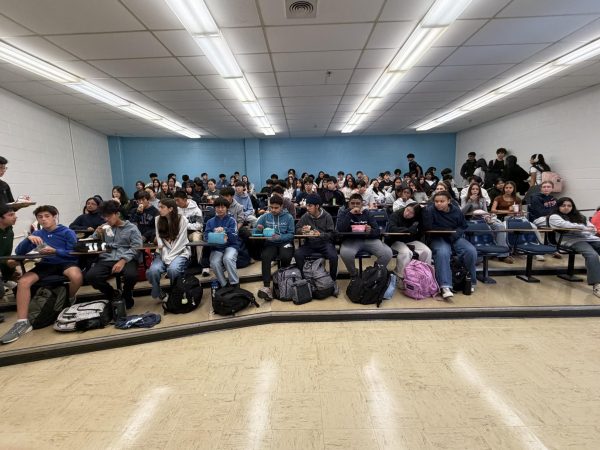Does your daily routine demand too much from the environment?
Sophomores Nikki Altman and Dani London have their Hydro Flasks with them throughout the day on Mar. 2.
As you get in your car and head off to your friend’s house, pack a plastic water bottle in your lunch for school or eat meat for dinner, you are contributing to climate change. Let’s learn how to stop ourselves from being part of the problem and see what other students have been doing to become more environmentally conscious in their daily lives.
One thing that students have been changing in their daily routine is investing in a reusable water bottle. Having a reusable water bottle is beneficial as it removes the need for plastic water bottles, which is a huge problem as “the U.S. consumes 1,500 plastic water bottles every second,” according to Treehugger.com.
Some reusable water bottles can be expensive, such as the Hydro Flask 32 oz., which is $45. However, the Hydro Flask brand ensures a lifetime warranty on all their bottles so after buying only two 24-packs of Deer Park plastic water bottles for $26.99 each, the Hydro Flask will actually be a way more affordable option. “I like using my Hydro Flask because it gets me to drink more water and use less plastic ones,” sophomore Dani London said.
Another change that students have made to their daily routine is choosing biking and walking over driving. It is no shocker that walking and biking is way better for the environment than driving, but to directly compare them, “a car has to get the equivalent of about 220 miles per gallon before it matches the fuel economy of shoe leather,” according to Sightline.org. This means that until a car can go 220 miles on one gallon of gas (the average mpg is 25), walking will prove to be more environmentally friendly.
Walking or biking to school, activities, friend’s houses or stores is more fun, healthier and better for the planet. “When we had in-person school, I walked everyday because it would be a waste of gas and bad for the environment if I drove,” senior Anya Bijlani said.
An overlooked change that students should be making to their daily routines and becoming aware of is eating less meat. The agricultural industry contributes more than 8% overall to climate change, with the primary emission being methane, which experts say is more environmentally destructive than carbon dioxide. Consumers can directly reduce the demand for commercially-raised meat by eating less of it or eating more accurate portion sizes. For instance, an eight-ounce steak is actually almost three meal portions of meat, according toGreengeeks.com.
Sophomore Josh Erd and his family have acknowledged this problem and since made a change. “My family has definitely cut our meat intake down a lot. We used to buy meat from the grocery store and eat it for dinner a couple times a week. Now, we usually only eat meat once or twice a week that we get from a farmer’s market. This meat is from local farms and it is better for the environment to shop this way,” Erd said.
Your donation will support the student journalists of Thomas S. Wootton High School. Your contribution will allow us to purchase equipment and cover our annual website hosting costs.
Leah Starr is a 2021 graduate.







